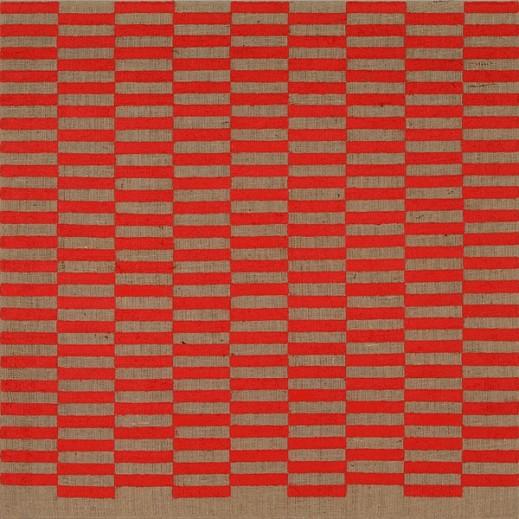
Eric Dever at Islip Art Museum
April 1, 2014
Enter the verb redact. Its original meaning was “to make ready for publication,” ...it still carries the meaning of “to edit,”but now narrows it to... “conceal from unauthorized view; censor but do not destroy.”
William Safire, New York Times, September 9, 2007
APRIL 13 – JUNE 1 2014
c u ra t e d b y J a n e t G o l e a s
March 15, 2014, East Islip, NY: Islip Art Museum is pleased to present REDACTED, a group exhibition curated by Janet Goleas, featuring selected paintings, drawings, sculpture, collage and assemblage by artists Josh Blackwell, Sharon Butler, Jonathan Callan, Eric Dever, Stacy Fisher, Brian Gaman, Jim Lee, Lauren Luloff, Stefana McClure, Linda Miller, Bonnie Rychlak, Mathias Schmeid, Tim Spelios, Ryan Steadman, Ryan Wallace, Ross Watts and Letha Wilson.
The exhibition examines alterations, inversions, erasures, cover-ups, cut-aways, strike-throughs and other amendments in vision, thought and execution by contemporary artists working in a variety of mediums and methodologies.
In the Oxford English Dictionary, the word redact is defined simply as “to edit,” as one might prepare a document for publication. But in the 20th century the term took on a broader depth of meaning inferring myriad associations to obfuscation, disinformation, censorship and the almighty non- sequitur. In contemporary culture, the word “redacted” has connotations that go deeper than blacked out C.I.A. documents. Deletion or disinformation – redactions – in nonfiction can have the effect of turning truth into fantasy. Excision or concealment in written, auditory, or film and video material might alter history, obscure entire hypotheses or convert, disguise or transform content. In the visual brain, imagery can be eclipsed by ocular migraines or sun blindness resulting in a redacted visual field, and in psychology, trauma can result in whole areas of memory that cease to be accessible. But since 1953, when Robert Rauschenberg spent that long month erasing one of Willem de Kooning’s favorite drawings, the idea of redaction has been central to the concept of altered content in visual art.
FOR IMMEDIATE RELEASE
CONTACT: Beth Giacummo-Lachacz
beth.isliparts@gmail.com
Inherently political, the act of erasing, transmuting or removing content is something that comes naturally to the visual artist -- one might even posit that it is an inevitable part of the creative process. For Josh Blackwell, the ubiquitous plastic bag becomes a transformative, fetishized object – a repository upon which the artist’s mark-making converts our cultural scraps into sumptuous fields of ornament and visual invention. In works by Sharon Butler, Jim Lee and Lauren Luloff, whole areas of observed information are excised from view, yet they anchor the visual field both in composition and ideology.
Eric Dever abridges color and form to minimalist equations in reductive suites of serial paintings, while Linda Miller, Bonnie Rychlak and Stacy Fisher examine the presence/absence of negative vs. positive space in evocative works that question corporeality, identity and presence. In Letha Wilson’s complex portraits of the American West, idioms collide, placing the iconic natural landscape alongside industrialization and fractured content.
Collages by Tim Spelios reorder the history of art and its context and Ryan Steadman’s ersatz book forms provide a beguiling and painterly façade in which the viewer really can tell a book by its cover. For Ryan Wallace, the vestiges of earlier works assemble like DNA strands, forging a wholly new but relational family of paintings.
Jonathan Callan, Stefana McClure and Ross Watts mine the written word, conferring aesthetic interdictions upon works of literature as well as the syntax of this century’s information overload. Mathias Schmeid delicately transforms visual data, morphing graphic imagery into ephemeral sculptural anatomies. For Brian Gaman, the visual field is so deeply in focus that sight itself is recalibrated to the infinite.
Janet Goleas is an artist, writer and curator who writes regularly for her art blog, (blinnk.blogspot.com). She lives in East Hampton, at the edge of the world.
Islip Art Museum has been called the “best facility of its kind outside of Manhattan,” by The New York Times. The museum maintains an ambitious exhibition program featuring contemporary art by national and international artists, as well as emerging artists drawn from surrounding communities. For more information, please contact Beth Giacummo-Lachacz at 631.224.5402.
The exhibit will open April 13th and continue through June 1, 2014, with a reception for the artists on Sunday, May 4th, from 1 – 4pm. The reception is free and open to the public.
Islip Art Museum
50 Irish Lane
East Islip, New York 11730
Tel: 631.224.5402 www islipartmuseum.org
Back to News
